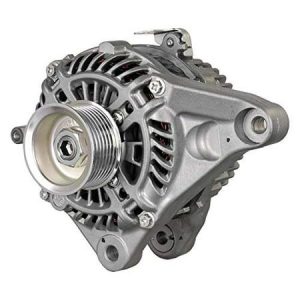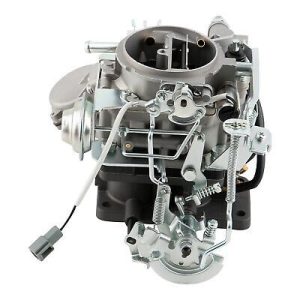The beating heart of many iconic Ford vehicles, the Coyote engine has earned a reputation for power, performance, and thrilling driving experiences. But what exactly is a Coyote engine, and what makes it such a coveted powerplant? This in-depth guide delves into the world of the Coyote, exploring its origins, design, technical specifications, applications, and its place in Ford’s automotive legacy.
The Legend Begins: The Birth of the Coyote Engine
The story of the engine starts in 2009 when Ford engineers embarked on a mission to create a new generation of V8 engines for its muscle cars and performance vehicles. The goal was to develop a powertrain that could compete with rivals like the Chevrolet LS3 while maintaining the spirit of classic Ford muscle.

The name “Coyote” itself pays homage to Ford’s racing heritage. It references a successful four-valve V8 race car, the Ford Coyote, driven by legendary driver A.J. Foyt in the 1960s and 70s. This historical connection embodies the spirit of performance and innovation that the new engine aimed to capture.
Under the Hood: Unveiling the Coyote’s Design
At its core, the engine is a 5.0-liter, naturally aspirated, DOHC (Double Overhead Camshaft) V8 engine. This configuration features two cylinder heads, each with its own camshaft controlling the intake and exhaust valves. This allows for more precise valve timing and improved engine performance compared to single-overhead camshaft designs.
The Coyote boasts an aluminum block and heads, contributing to a lighter weight compared to traditional iron engine blocks. This weight reduction translates to better handling and overall vehicle performance. Internally, the engine utilizes forged steel components for increased strength and durability, ensuring the engine can handle the demands of high-performance driving.
Power Unleashed: Performance Specs and Capabilities
The Coyote engine’s true appeal lies in its impressive performance capabilities. Depending on the specific generation and configuration,engines can deliver anywhere from 412 to 486 horsepower and 400 to 418 lb-ft of torque. This translates to exhilarating acceleration, effortless power delivery, and a truly thrilling driving experience.

The Coyote’s power is further enhanced by its responsive nature. The combination of DOHC design, high-flow intake and exhaust systems, and advanced engine management systems allows for quick throttle response and a feeling of being connected to the engine’s raw power.
Beyond Power: Additional Advantages of the Coyote Engine
While power is undoubtedly a highlight, the Coyote engine offers other advantages that contribute to its overall appeal:
- Durability: The robust construction with forged components and high-quality materials ensures the Coyote engine can withstand demanding driving conditions and high mileage.
- Scalability: The engine is a tuner-friendly platform. Modifications like performance air intake systems, exhaust upgrades, and tuning can further unlock its power potential.
- Sound: The engine produces a distinctive, throaty exhaust note that’s music to the ears of car enthusiasts. The sound adds to the overall driving experience and embodies the power of the engine.
The Coyote’s Domain: Applications Across Ford Vehicles
The Coyote engine isn’t just for high-performance Mustangs. Its versatility has seen it powering a range of Ford vehicles, each benefiting from its impressive power and performance characteristics:

- Ford Mustang: Undoubtedly the most iconic pairing, the Coyote engine has breathed life into the latest generations of the Mustang, offering exhilarating power and propelling it to the forefront of the muscle car segment.
- Ford F-150: For those seeking a powerful and capable truck, the F-150 with the Coyote engine option delivers impressive towing capabilities and effortless acceleration, making it ideal for work or adventure.
- Ford Explorer ST: The Coyote engine injects a dose of performance into the Ford Explorer ST, transforming it from a family SUV to a thrilling performance machine.
Evolution of a Legend: The Coyote’s Journey Through Generations
Since its debut in 2011, the Coyote engine has undergone several revisions and upgrades. Here’s a glimpse into the evolution of this powerhouse:
- First Generation (2011-2017): The original engine introduced in the 2011 Mustang GT marked a significant leap forward in performance for the iconic muscle car.
- Second Generation (2018-2022): The second-generation Coyote received significant upgrades, including a redesigned intake manifold, improved direct injection system, and a revised valvetrain. This resulted in increased horsepower and torque figures.
- Third Generation (2024-Present): The latest iteration of the engine continues to push the boundaries of performance. It features a revised combustion chamber design, improved cooling system, and advanced engine management technology. These advancements contribute to a bump in horsepower, reaching a peak of 486 horsepower in the 2024 Mustang GT.
The evolution of the Coyote engine exemplifies Ford’s commitment to continuous improvement and staying at the forefront of performance technology.
The Future of the Coyote: Adapting to a Changing Landscape
The future of the Coyote engine, like the broader automotive industry, faces the challenge of environmental sustainability and stricter fuel economy regulations. While the power and performance of the Coyote are undeniable, its fuel efficiency might not align with future emission standards.
Here’s how the Coyote engine might adapt to the changing landscape:

- Hybrid Powertrains: One potential solution involves integrating the engine with an electric motor to create a hybrid powertrain. This could offer the best of both worlds – exhilarating power from the Coyote combined with improved fuel efficiency and reduced emissions from the electric motor.
- Advanced Technologies: Advancements in engine technology like improved combustion efficiency and lightweight materials could help the engine maintain its competitive edge while reducing its environmental impact.
Despite the challenges, Ford’s commitment to the engine suggests it will continue to play a role in the company’s performance vehicle lineup, potentially in a hybrid or technologically enhanced form.
The Allure of the Coyote: More Than Just an Engine
For many car enthusiasts, the Coyote engine represents more than just a powerful engine block. It embodies the spirit of classic American muscle cars, a legacy of thrilling driving experiences, and a connection to Ford’s rich history of performance innovation. The Coyote’s throaty roar and exhilarating power delivery evoke emotions and ignite a passion for cars that transcends mere practicality.
Owning a Coyote-Powered Ford: Things to Consider
If the power, performance, and heritage of the engine resonate with you, here are some factors to consider before purchasing a Coyote-powered Ford:

- Fuel Costs: As a high-performance engine, the Coyote generally has lower fuel economy compared to smaller engines. Be prepared for potentially higher fuel costs.
- Maintenance Needs: Maintaining a high-performance engine like the Coyote can be more expensive than maintaining a smaller engine. Factor in potential maintenance costs when making your decision.
- Driving Needs: Do you truly need the power of an engine for your daily driving needs? If fuel efficiency and practicality are top priorities, a smaller engine might be a more suitable choice.
Experience the Thrill: Find Your Coyote-Powered Ford Today!
For those who prioritize exhilarating performance, a connection to automotive history, and the undeniable power of the Coyote engine, then owning a Coyote-powered Ford can be an incredibly rewarding experience. The thunderous roar, the surge of acceleration, and the connection to a legendary engine are unmatched.



